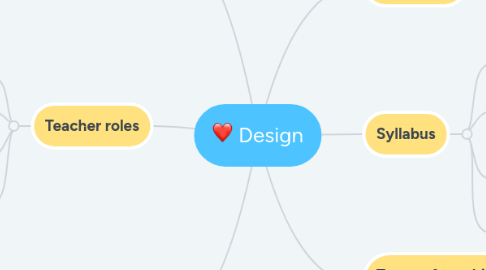
1. Learner roles
1.1. Learners' contribution
1.1.1. The types of activities learners carry out
1.1.2. The degree of control that learners have over the content of learning
1.1.3. The patterns of learner groupings adopted
1.1.4. The degree to which learners influence the learning of others
1.1.5. The view of the learner as processor, performer, initiator, problem-solver,...
2. Teacher roles
2.1. Types of functions teachers fulfill
2.2. Degree of teachers influence over learning
2.3. Degree to which teachers determine the content of learning
2.4. Types of interaction between teachers and learners
3. Roles of instructional materials
3.1. The primary goal of materials
3.1.1. Present content, practice content, facilitate communication between learners, or enable learners to practice content without the teachers help
3.2. The form of materials
3.2.1. Textbooks, DVD, computer software
3.3. The relation of materials to other sources of input
3.3.1. Whether they serve as the major source of input or only as a minor component of it
3.4. The ability of teachers
3.4.1. Their competence in the language or degree of training and experience
4. Objectives
4.1. The specification of particular learning outcomes
5. Syllabus
5.1. Subject matter
5.1.1. Eg: ESP, Content-based courses
5.2. Linguistic matter
5.2.1. Situational Language Teaching, the Audiolingual Method, the Lexical Approach, and Text-Based Instruction,
5.3. Richards: 10 basic syllabus types
5.3.1. grammatical, lexical, functional, situational, topical or content-based, competency-based, skills-based, task-based, text-based, and integrated.
